AI in Cybersecurity: Friend or Foe? | AI-Powered Threats & Defenses
- bakhshishsingh
- Sep 25
- 3 min read
Artificial Intelligence (AI) has rapidly become a defining force in cybersecurity. It’s a double-edged sword: while defenders leverage AI to detect threats and respond faster, attackers use the same technology to scale, automate, and sophisticate their attacks.
As businesses adopt AI across industries, the question is no longer “Should we use AI in cybersecurity?” but rather, “How do we stay ahead of adversaries who already are?”
AI’s Expanding Role in Cybersecurity
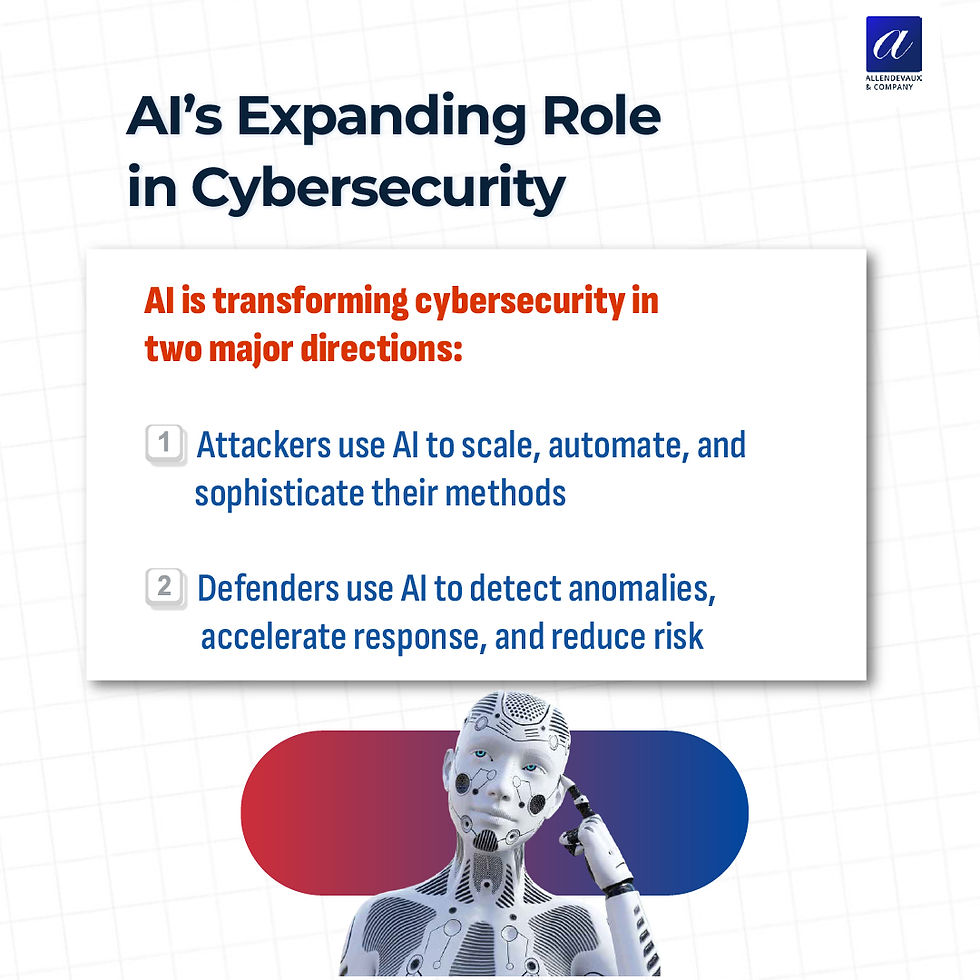
AI is transforming cybersecurity in two critical directions:
Attackers’ Advantage: Hackers exploit AI to launch large-scale phishing campaigns, generate malware scripts, and manipulate trust through deepfake voices and videos. Machine Learning (ML) even helps them discover zero-day vulnerabilities faster than humans can.
Defenders’ Shield: Security teams rely on AI to detect anomalies, reduce false positives, accelerate incident response, and automate vulnerability management.
This dual role makes AI one of the most disruptive — and essential — tools in the cybersecurity battlefield.
The AI Tech Stack You Need to Understand
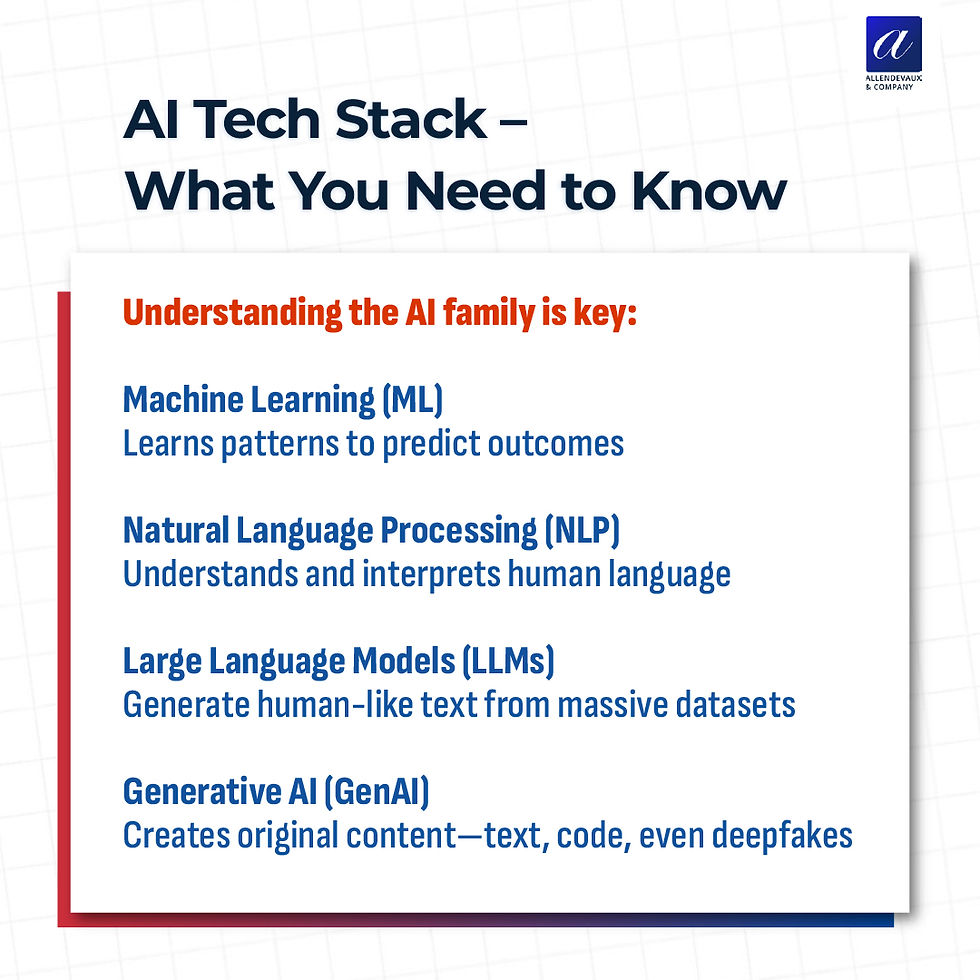
To build resilience, businesses must understand the AI technologies driving modern cybersecurity:
Machine Learning (ML): Identifies patterns and predicts malicious behavior.
Natural Language Processing (NLP): Processes and interprets human language, making alert triage and phishing detection more effective.
Large Language Models (LLMs): Generate human-like text, which attackers use for phishing but defenders use for automated reporting.
Generative AI (GenAI): Creates original text, code, or media — enabling both deepfake scams and automated security scripts.
By knowing how each layer functions, organizations can apply AI strategically while anticipating how adversaries may abuse it.
How Hackers Exploit AI
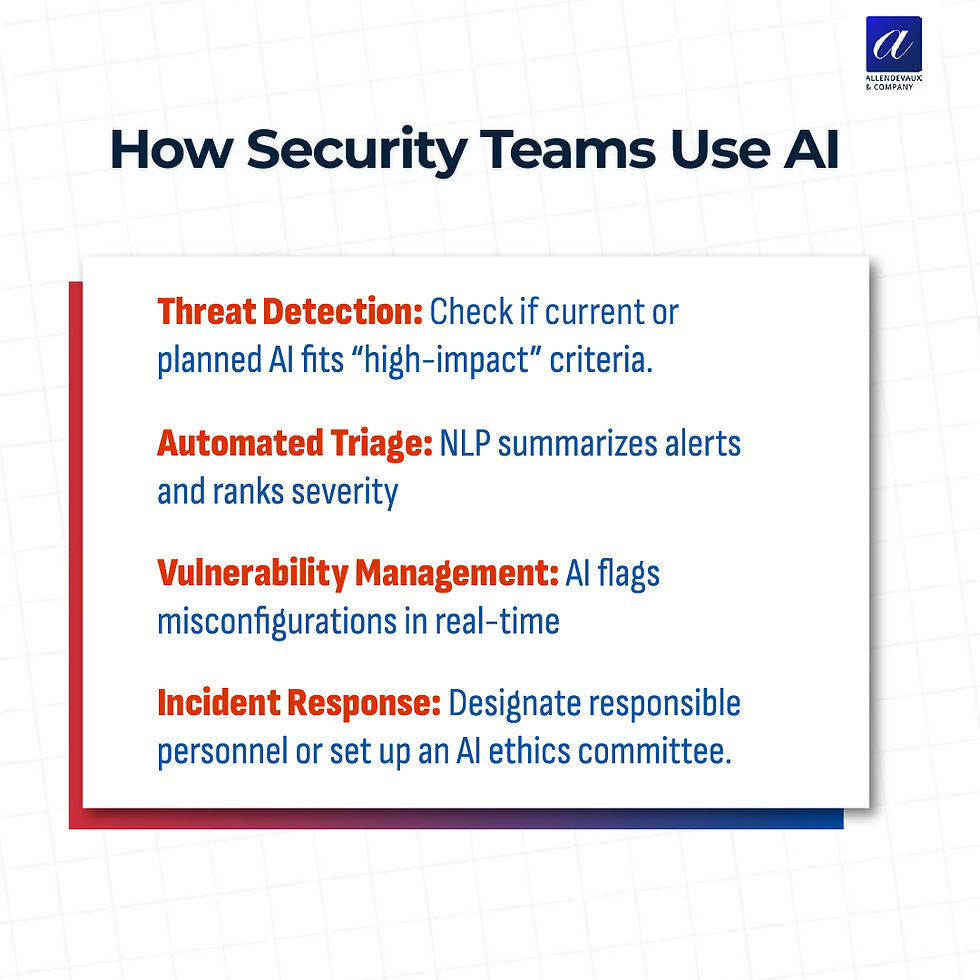
Cybercriminals waste no time adopting AI. Some of their most common tactics include:
Phishing at Scale: Generative AI produces convincing, error-free emails that bypass traditional detection.
Malware Automation: AI writes or obfuscates code that avoids signature-based antivirus tools.
Social Engineering: Deepfake technology impersonates executives or trusted contacts to manipulate victims.
Zero-Day Discovery: ML accelerates vulnerability hunting, giving attackers a head start.
These tactics highlight why AI-driven threats are faster, smarter, and more dangerous than traditional cyberattacks.
How Security Teams Use AI

Fortunately, defenders are equally empowered by AI. Cybersecurity teams deploy AI to:
Threat Detection: Identify anomalies and high-impact risks in real-time.
Automated Triage: NLP summarizes alerts and prioritizes severity, reducing alert fatigue.
Vulnerability Management: AI continuously scans for misconfigurations and exposures.
Incident Response: GenAI generates containment scripts, assists in forensic code analysis, and even supports SOC workflows via ChatOps.
This not only reduces response times but also enables organizations to defend at scale — a crucial advantage against AI-powered adversaries.
GenAI in the Battle of Code
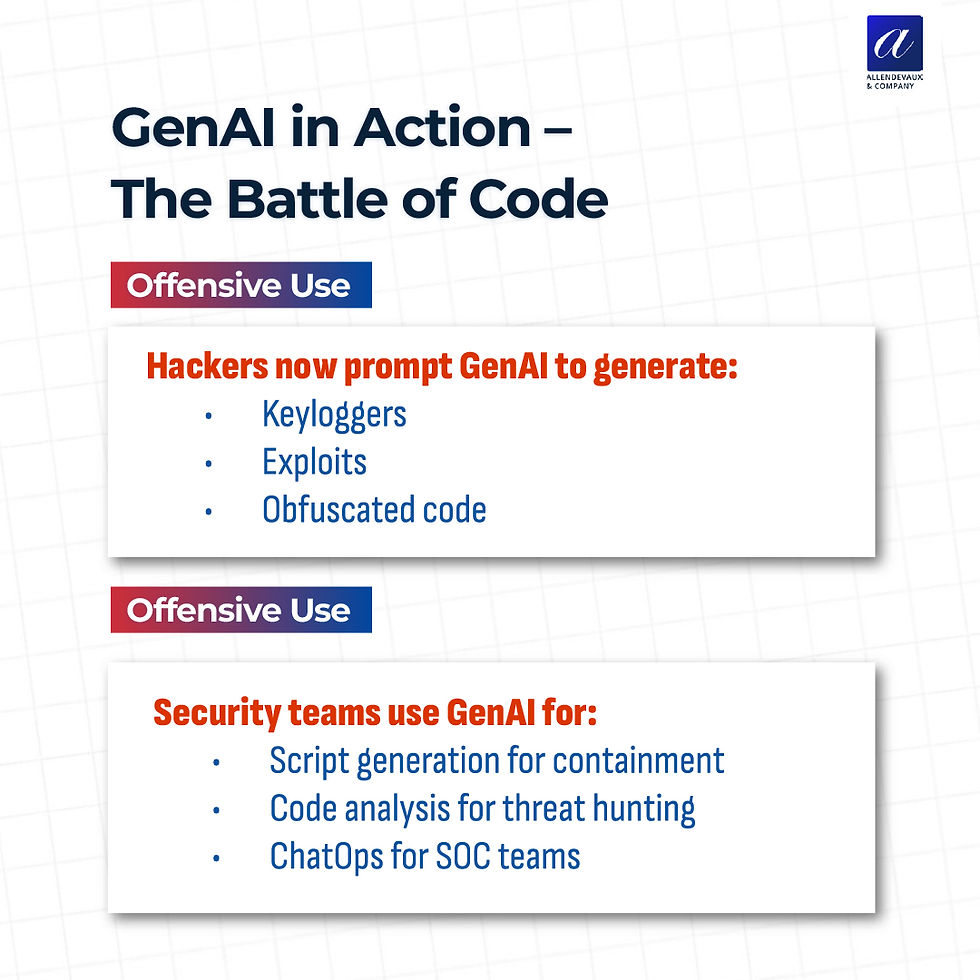
Perhaps the clearest example of AI’s dual role is in code.
Offensive Use: Hackers prompt GenAI to write keyloggers, exploits, and obfuscated scripts.
Defensive Use: Security teams harness the same tools for automated script generation, reverse engineering malware, and building smarter detection logic.
The reality is that Generative AI accelerates both attack frequency and defense capability. The difference lies in how prepared your security teams are to deploy it effectively.
Why AI-Driven Cybersecurity is Mission-Critical
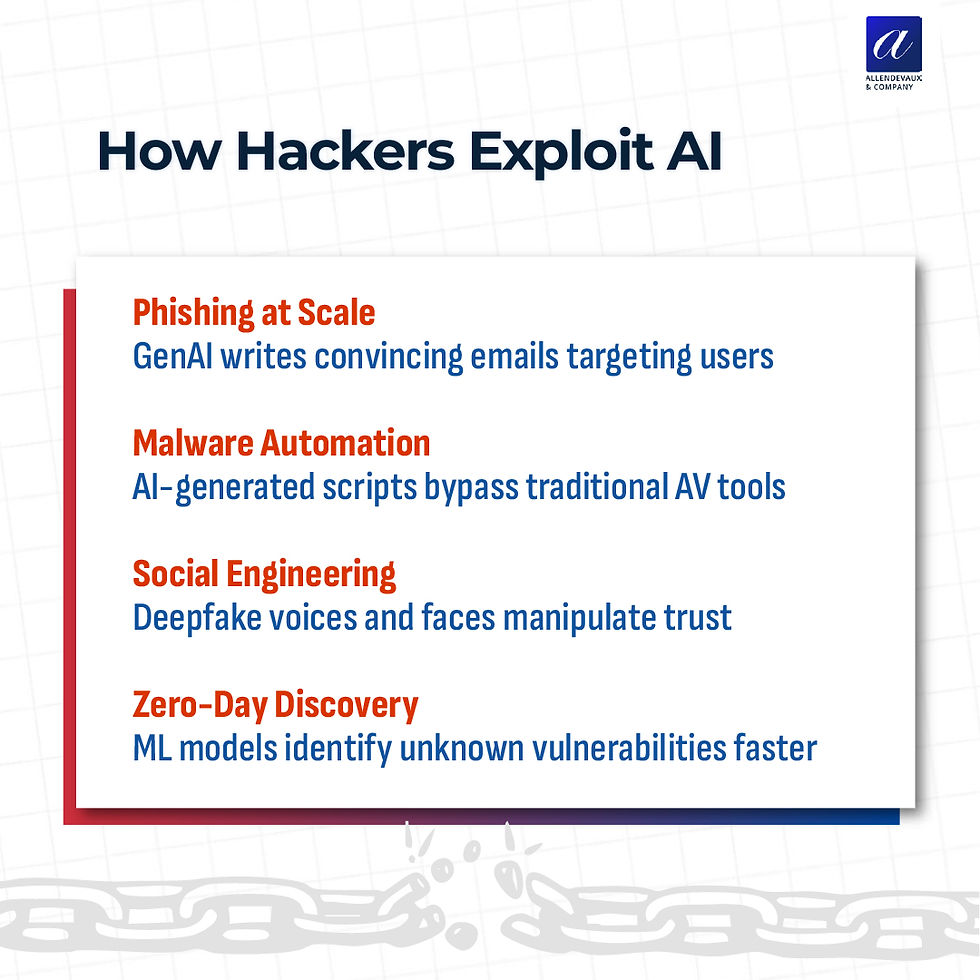
The stakes are rising. With increasing attack sophistication and widespread SOC challenges such as alert fatigue, talent shortages, and resource constraints, integrating AI into your security stack is no longer optional — it’s mission-critical.
Organizations that fail to adopt AI-driven cybersecurity risk falling behind attackers who are already exploiting these tools. Conversely, those that embrace AI strategically can gain visibility, speed, and resilience.
Final Thoughts: Friend or Foe?
AI in cybersecurity is both — it’s a friend to defenders and a powerful weapon for attackers. The difference lies in who wields it more effectively.
At Allendevaux and Company, we help organizations harness AI as a force for good. From AI-powered threat detection to automated incident response, we ensure your business stays one step ahead of adversaries.
👉 Ready to strengthen your defenses with AI? Contact us today and future-proof your cybersecurity strategy.





Comments